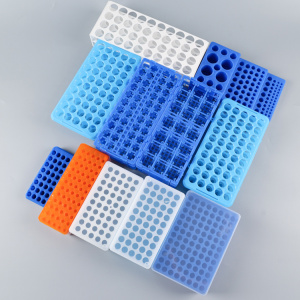How to use pipettes and tips
There is no doubt that pipettes are one of the most important tools in biological research. They come in a variety of designs and are used in countless fields of research. While many liquid handling guides emphasize the importance of pipette maintenance, pipette technique is just as important. Below, we share some tips on how to use a pipette, and top 10 pipetting tips to improve your pipetting technique.

1. Choose the right pipette and pipette tip: The matching degree of the pipette gun and the pipette tip is the key to the accuracy of pipetting. If the tip and pipette do not match, or use poor quality tips, the seal between the tip and the pipette may be compromised. A good pipette tip ensures a proper seal to minimize sample loss due to leaks.
2. Properly calibrate the pipette according to the liquid density: If the density of the liquid differs greatly from that of the water, please recalibrate the pipette. If you are pipetting viscous liquids, be sure to pipette at a slower speed and work in reverse pipette mode. When pipetting volatile liquids, you need to pipette quickly and use the reverse pipette mode.
3. Pre-wet the tip: To reduce the loss of liquid hanging on the wall, pre-wet the tip at least 3 times. This method of infiltration helps to establish temperature balance and bring humidity into the dry space within the tip. Skipping this step may affect the accuracy of the dispensed volume due to evaporation or liquid retention.
4. Proper aspiration: Immerse the tip below the surface of the liquid. When sucking liquid, the tip should not be immersed too deep in the liquid, and the residence time in the liquid should be about 1S, because immersion too shallow or too deep may lead to inaccurate liquid suction.
5. Pause after each puff: A slow, even, sudden release helps reduce errors. Especially important when dealing with viscous liquids. As much as possible, try to pause for one to two seconds after each aspiration to allow the liquid level to stabilize in the tip.
6. When using the pipette, you also need to pay attention to the inclination angle of the pipette: at the same time, pay attention to the inclination angle of the pipette during operation, try to ensure vertical suction, and keep the inclination angle range not greater than 20°. When aspirating liquid, try not to touch the wall of the container with the tip, especially when handling microscopic samples.
7. Adjust to appropriate gear: Use consistent and stable speed and pressure when handling pipettes and samples. In the design of Rainin pipettes, in order to ensure the accuracy of pipetting, two gears, the first gear and the second gear, are set. You can choose the appropriate gear for pipetting operations according to your experiment and usage habits.
8. Pay attention to temperature: If your experiment allows, make sure that pipettes, tips, and liquids are all at room temperature. Changes in temperature and air pressure can also cause the air inside the pipette tip to contract or expand, which can affect the accuracy of dispensing liquids. Also, try to avoid overhandling pipettes and tips, as your body temperature may also affect the amount of liquid dispensed. After the pipetting operation is completed, it can be placed on the pipette holder, not on the laboratory bench.
9. Do a good job in daily maintenance and maintenance: Instrument calibration and daily maintenance are also effective means to prolong the life of the pipette, so it is recommended to clean and maintain the pipette on a weekly or monthly basis, and calibrate regularly to improve its accuracy.
10. Develop good pipette operation habits: The development of pipetting operation habits is often ignored. Such habits include not only the correct and skilled use of pipette guns but also the posture of pipetting experiments. If the pipetting posture Incorrect operation, repeated operations for a long time may cause your muscles to be in a tense state or even muscle strain. To solve this problem, you can choose an ergonomic pipette and develop good pipetting habits.

The above summarizes the use of pipettes, the use of pipettes, and the top 10 tips for pipetting operations will help to formulate the GPP of laboratory pipettes. Yongyue Medical has ten years of experience in the field of biology, providing laboratory instruments and consumables such as pipettes and pipette tips and a complete one-stop laboratory solution.



